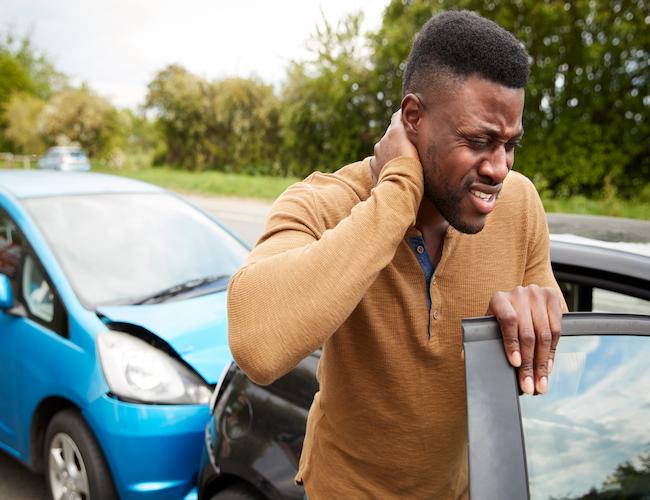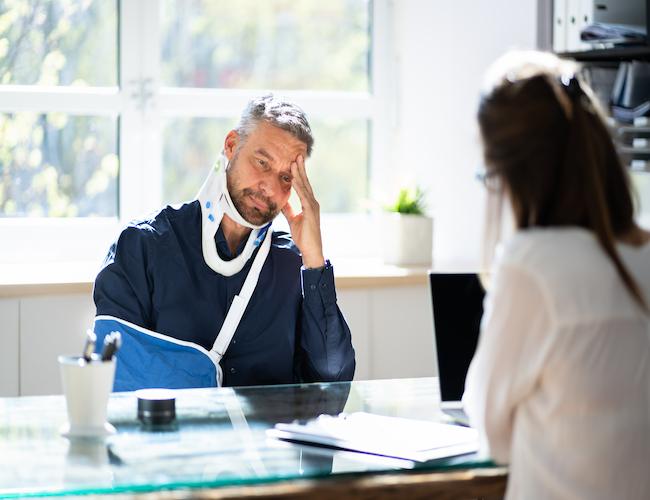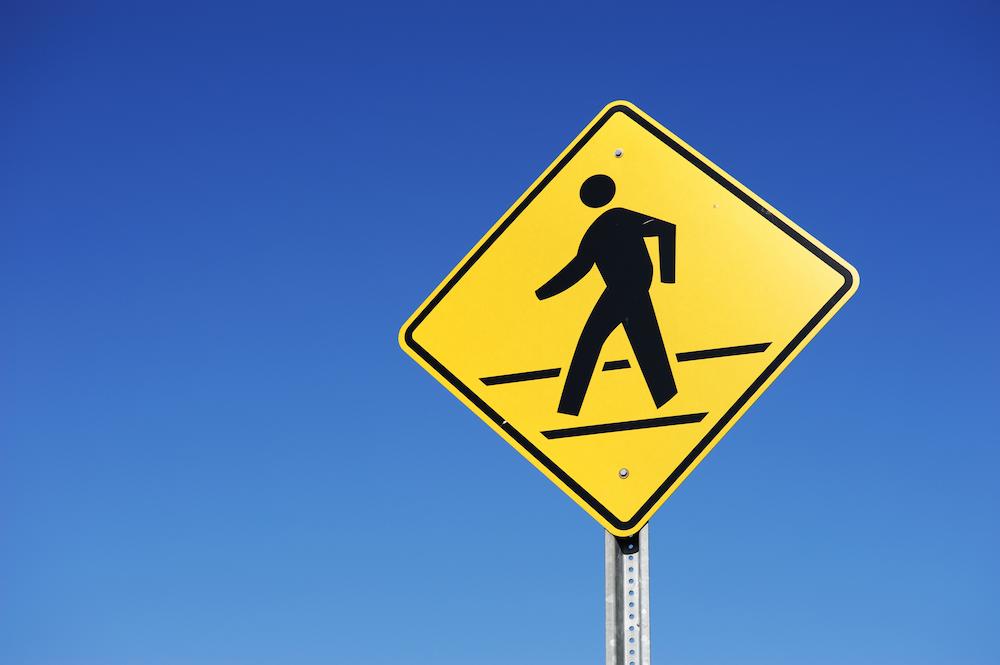Does Insurance Cover Hitting a Pedestrian in Pennsylvania?
Pennsylvania’s Personal Injury Protection (PIP) coverage is intended to help cover medical bills after an accident, even for pedestrians. Even if you don't have car insurance, you can file a PIP claim under the insurance policy of the driver who hit you. This means your medical bills can be paid without necessarily worrying about co-pays or deductibles. However, since the PIP mandatory minimum is $5,000, it might not go very far.
At that point, your health insurance might have to step in to cover the rest of the treatment. Missed wages and other costs (like caregivers) often have to come out of the victim's own pocket — but they shouldn't have to be. If the driver was at least 51% at fault, the pedestrian victim has the right to seek compensation with a claim or lawsuit that covers medical costs, lost wages, pain and suffering, and more.
Even bills paid by the victim's health insurance can be reimbursed (but the victim's insurance company may request to be paid back from a settlement through a process called "subrogation").
This can all be a lot to navigate, especially after receiving injuries in an accident, which is where an Allentown pedestrian accident law firm can step in and help.
What Is the Longest a Settlement Can Take?
How long a settlement takes varies, depending on how complex each case is. Some settlements may resolve in a few weeks or months, while others (especially those involving serious injuries or disputes) can take years. Factors like negotiations, medical evaluations, and court schedules can all impact how long it takes for a case to resolve.
Keep in mind that the statute of limitations in Pennsylvania can absolutely impact the length of time you have to file a case to get it started, which is about two years. The only way to get a general estimate is to talk to a pedestrian accident attorney who can also help you file on time.
How Much Can You Sue for in PA?
In Pennsylvania, a pedestrian who is hit by a car, truck, or motorcycle can sue for the full extent of their damages. Economic damages an accident victim could claim might be:
Medical expenses
Future medical care costs
Lost wages (time off from work due to the injury)
Loss of future earning capacity
Transportation costs (to and from medical appointments)
Home modifications (if the injury requires accessibility changes)
In-home care or assistance services
Non-economic damages for Allentown pedestrian accidents might include categories like:
Pain and suffering
Emotional distress
Mental anguish
Loss of enjoyment of life
Loss of consortium (impact on relationship with spouse or family)
Permanent disfigurement or scarring
Loss of independence or mobility
Importantly, pain and suffering limits aren't an issue like they usually are for vehicle-on-vehicle limited tort policies. Pedestrians are granted full tort rights, regardless of their own insurance policy's tort option.
There is no set cap on how much you can sue for. Compensation depends on the severity of your injuries, the impact on your life, and the circumstances of the accident.
If a pedestrian doesn't have insurance, they may still be covered under a relative’s policy or can seek compensation directly from the at-fault driver’s insurance.
Can You Sue for Pain and Suffering in PA?
When pedestrians are injured in Pennsylvania, they could have the right to sue for pain and suffering.
Unlike in typical vehicle-on-vehicle accidents, if you have limited tort coverage, you could still have the chance to pursue full tort benefits. In a pedestrian accident lawsuit, full tort coverage means that the amount of pain and suffering you can ask for isn't limited like it usually is for policyholders with limited tort coverage.
If you don't have your own insurance coverage, you may still have options. If you live with an insured relative, you might be covered under their policy, or if you have no coverage or insufficient coverage, you could seek compensation from the at-fault driver’s insurance. A pedestrian accident injury lawyer can explain what options (in terms of coverage and possible damages) might be available based on your particular, unique case.
What Happens if a Pedestrian Causes a Car Accident in Allentown?
Insurance companies may try to deny a pedestrian's claim by declaring that the pedestrian was at fault for the accident. While there are some cases where the pedestrian was at fault, it's important to remember that PA has a modified comparative negligence system. So even if a pedestrian was partly responsible, as long as they were less than 51% at fault, they could still be entitled to compensation.
Some ways insurers try to deny payments are by claiming the pedestrian was crossing traffic against the signal, jaywalking, in a zone pedestrians are clearly not allowed in, were distracted (by a phone or similar), or were otherwise acting recklessly.
Before going ahead with whatever your insurance company says or agreeing to a low payment or accepting fault unnecessarily, talk to a pedestrian accident attorney in Pennsylvania.
Where Do Pedestrian Accidents Typically Occur in Pennsylvania?
Pedestrian accidents occur all throughout Pennsylvania, particularly near transit stations, intersections, and midblock crosswalks. Statistically, the most dangerous area for pedestrians is on Roosevelt Boulevard or its cross streets, as reported by the City of Philadelphia’s Pedestrian Safety Action Plan.
The top ten most dangerous corridors for pedestrians are near Allentown — around the Montgomery County Line, Bucks County Line, and Schuylkill County Line.
What Time of Day Do Most Pedestrian Accidents Occur?
Accidents generally occur from dusk to dawn, specifically between the hours of 6 PM and midnight. Fatal crashes happen mostly at night, according to the CDC. Nighttime crashes are typically fueled by impaired driving (drugs and alcohol), fatigue, and reduced visibility.
What Is the Most Common Injury for Pedestrians?
The most common injuries for pedestrians include fractures, head trauma, spinal injuries, and internal injuries. Damage to soft tissue and superficial abrasions are often seen in pedestrian accidents as well. Head injuries typically involve loss of consciousness, and a majority of internal injuries are internal bleeding.
After a person is hit by a car, the lower extremities are more likely to be damaged (legs and knees most commonly). If a victim does sustain injuries to the upper extremities, it’s most likely to be the shoulders and arms, says the Association for the Advancement of Automotive Medicine (AAAM).
What Is a Major Factor in Crashes with Pedestrians?
One major factor in crashes with pedestrians is driver error, including distractions like texting, speeding, or failing to yield at crosswalks. Speeding reduces reaction time and increases the severity of injuries in collisions.
Impaired driving (due to alcohol or drugs) impacts a driver's judgment and response time. Fatigued driving poses similar risks. Poor visibility and certain road design features (like wide, high-speed roads) can make it harder for drivers to see and react to pedestrians in time.
What Is the Best Defense in Preventing Allentown Pedestrian Crashes?
Two ways to prevent accidents include pedestrian countdown signals (reduce crashes by 9%) and automated speed enforcement systems in active work zones (47% decrease in excessive speeding in those zones), according to PennDOT.
In addition to the measures above, the Pennsylvania Department of Transportation found that pedestrian accidents can be reduced by:
Shortening pedestrian crossways with median islands (also called pedestrian refuge islands).
Increasing visibility with better roadway lighting and high-visibility crosswalks.
Making curb improvements like corner radius reduction and curb extensions.
Reducing speeding with hardened centerlines, slow turn wedges, raised intersections and crossings, and speed limit reductions.
Improving sidewalks with sidewalk buffers, narrowed lanes/roadway reallocation, and intersection daylighting (not allowing cars to park 20 feet from an intersection).
Holding guilty parties accountable for their actions is how we play our part in keeping our roads and sidewalks safe. This is especially true with punitive damages (meant to teach a lesson and deter others from repeating dangerous behavior), which are typically more difficult to claim. Working with an Allentown pedestrian accident law firm helps get you what you need to recover and protect fellow Pennsylvanians.
Which Age Group Has the Highest Pedestrian Injury Rate?
The Department of Transportation says that most pedestrian injuries are caused by people between 25 and 29 years old (28 per 100,000 population). The second group most associated with pedestrian accidents was 21 to 24 years old (around 26 per 100,000 population).
The driving age group most likely to be responsible for a pedestrian fatality is between 60 and 64 years old (3.18 per 100,000 population). Those 60 to 64 and 65 to 70 are behind 23% of pedestrian deaths — the largest group.
What Are the Odds of Getting Hit by a Car While Walking in Pennsylvania?
Pennsylvania is one of the safer states for pedestrians, ranking 37 out of 50 for pedestrian accidents, according to the Governors Highway Safety Association (GSA).
While Allentown pedestrian accidents are sadly common, Philadelphia sees more of these, with a pedestrian being injured or killed, on average, every six hours, according to the City of Philadelphia’s Pedestrian Safety Action Plan.
Which Pedestrian Groups Are at Greatest Risk of Accidents?
The National Highway Traffic Safety Administration reports that while the average age of drivers crashing into pedestrians has changed over time, the demographics of pedestrians killed, age 45 to 48, has not fluctuated. Take into account that the number above is an average, meaning it takes into account all the data, adds and divides them, which is why this average (45 to 48 years) is misleading.
The groups most likely to be victims of a pedestrian accident are children and seniors. Children are harder to spot from drivers’ vantage points and can become distracted or forget street safety rules. Contributing factors to senior pedestrian accidents are slower reaction times or reduced mobility.
At What Speed Do Pedestrians Typically Sustain Injuries?
When pedestrians are struck by a car at 20 miles per hour, there is a 46% chance of receiving a moderate injury (like a concussion or fracture) and a nearly 20% chance of more severe injuries.
When vehicle speeds increase to 35 miles per hour, the chance of a moderate pedestrian injury jumps to 86% and a 67% chance of sustaining serious injuries (like an open fracture — when a broken bone comes out through the skin). Suffice it to say: cars don’t need to be going quickly to hurt a pedestrian in Allentown, Pennsylvania.
(This data is from the Insurance Institute for Highway Safety (IIHS).)
Are Smaller Cars Safer for Pedestrians?
Smaller cars can be safer for pedestrians but can also cause fatalities. Larger vehicles like trucks and SUVs are more likely to do significant harm. However, any physical injury can still have lasting physical and emotional effects — don’t hesitate to immediately seek medical care and work with the best pedestrian accident attorney to help recover compensation.
Where Is the Most Common Site for Fatal Collisions with a Pedestrian?
The most common sites for fatal pedestrian collisions in Pennsylvania include spots near Allentown (Bucks). Philadelphia pedestrian fatalities are even more common, especially around Northeast Philadelphia (along Roosevelt Boulevard), Kensington, Elmwood, and Greater Center City.
What Type of Vehicle Kills the Most Pedestrians?
Larger vehicles, like SUVs, vans, pickup trucks, and cars with hoods higher than 40 inches are 45% more likely to kill pedestrians, says the Insurance Institute for Highway Safety. Not only the 40-inch hood height, but cars with a blunt front profile were behind 26% pedestrian fatalities as compared to their sloped front counterparts.
When Should I Seek Legal Counsel After a Pedestrian Accident?
After seeing a doctor and taking care of your health post-accident, it's best to talk to a pedestrian injury attorney as soon as possible. Early legal guidance can help protect your rights, preserve evidence (and gather that evidence), and help ensure you don't miss critical deadlines (like the Pennsylvania statute of limitations).
An Allentown pedestrian accident law firm can also handle communications with insurance companies, advocate for fair compensation in settlements, or fight for you in the courtroom. Even if you're not sure who was at fault, a free, no-obligation consultation can help clarify your options.
I Was Hit by a Car as a Pedestrian: What Do I Do?
If you were hit by a car as a pedestrian, seek medical attention immediately, even if injuries seem minor. Get the contact information from the driver and witnesses.
You might want to call the police to file a police report as part of your evidence. Speaking of evidence, document the scene with photos if you are able. Keep records of your injuries and medical treatment.
You don't need to do it all by yourself — an Allentown injury lawyer has your back. They can help you negotiate with insurance or file and fight to get what you're owed with a pedestrian accident lawsuit.
How To Find the Best Pedestrian Accident Lawyer in Allentown, PA?
To find the best pedestrian accident lawyer in Allentown, PA, a little research is in order. Look for attorneys with
testimonials from satisfied, appreciative clients and impressive
verdicts and settlements. A long history in personal injury cases and litigation is an absolute must.
When interviewing an injury lawyer in Allentown, PA, ask if they offer free consultation. See if they work on a contingency fee basis, so you don’t pay unless you win. Ask about their experience specifically with pedestrian accidents and their success rate in similar cases. Finally, pick an injury attorney who communicates clearly and compassionately and makes you feel confident in their ability to represent you.
Does Cohen, Feeley, Altemose & Rambo Handle PA Pedestrian Accident Cases?
Yes, we have handled pedestrian accident cases all over Pennsylvania, including Allentown. No amount of financial compensation can replace what an accident takes from a person — or their family. In these situations, compensation can provide critical funding to help injured individuals and their loved ones access medical care, therapeutic services, and funds to replace lost income.
While our past successes can't predict or promise future ones, we've secured critical
verdicts and settlements like:
$750,000 for a 67-year-old pedestrian who sustained numerous injuries after being hit by a car
$958,000 in a wrongful death suit for the family of a pedestrian killed by a drunk driver
What Can Cohen, Feeley, Altemose & Rambo Do for Me?
Our team at Cohen, Feeley, Altemose & Rambo is here to listen to what happened — and offer our help. Our award-winning Allentown personal injury attorneys are well-versed in representing injured pedestrians. We are confident in our ability to explain your case's potential and fight for what you're owed. No matter where the accident occurred — a crosswalk, at an intersection, or elsewhere — we are here to help.
Our depth of knowledge is only paralleled by our depth of compassion for our fellow residents in Allentown, Bethlehem, and Easton. Whether you hail from the Lehigh Valley or the rest of Pennsylvania, you can call on us. When you need someone to protect your rights and secure you the compensation you deserve, schedule a free, no-obligation consultation with our Allentown pedestrian accident law firm.






